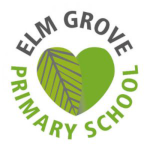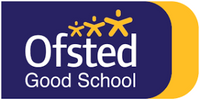Improvement and Development Priorities 2023-2024
This is Elm Grove’s 2023-24 development plan. Priorities have been agreed as a result of data analysis, professional dialogue, governor input, monitoring and questionnaire feedback.
Reading
The teaching of reading at Elm Grove is centred on the objectives for reading in The Reading Framework (published July 2023) and the National Curriculum in England: English programmes of study (updated July 2014).
Reading at Elm Grove (in depth look)
Reading Spine Whole Class Books
Phonics
Staff in Reception and Key Stage 1 and Key stage 2 are currently being or have recently been trained in a new Systematic, Synthetic Phonics programme called “Sounds-Write”. Sounds-write is one of the validated systematic synthetic phonics programmes on the list published by the DFES following the January 2022 update to the phonics validation process. The Sounds–Write approach to teaching phonics is phonographic, which is to say it starts with what all children acquire naturally and right from the start – the sounds of their own language; then it teaches that letters or combinations of letters, called graphemes are the agreed ways in which we represent these sounds when we write.
Handwriting
At Elm Grove we use the Kinetic Letters programme for our handwriting curriculum. Using four main threads of making bodies stronger, holding the pencil, learning the letters, and flow and fluency, the programme enables children to develop legible handwriting that is produced quickly and automatically. With the development of automaticity, handwriting becomes a valuable tool and not a hindrance to learning.
Learn more about Kinetic Letters:
We would like all of our parents/carers to read and sign our Home School Partnership.
Maths
At Elm Grove we believe that learning mathematics is about enjoyment, curiosity and discovery. We don’t just want to ‘get things right’, we want to talk about different and efficient ways of finding answers, explain why they are true and maybe ask more questions! We use concrete materials and visual representations to expose mathematical concepts and we learn how to use precise mathematical language to communicate ideas. Through problem-solving and talking about our maths we develop deep and secure understanding. We also rehearse, repeat and revisit key concepts to help ideas stick. We know that if we build good mathematical fluency (knowing and understanding key facts), it is much easier to move on to more complex problems. At Elm Grove, everyone is a mathematician; we learn to notice patterns, make connections, spot mathematical rules and feel success.
Maths at Elm Grove (in depth look)
PSHE
The importance of PSHE education in for example preventing bullying, prejudice, and in contributing to positive physical, emotional and mental health and healthy relationships is increasingly recognised at Elm Grove Primary School. Therefore, at Elm Grove Primary School PSHE education is an important part of our curriculum as it enables our pupils to build healthy friendships and keep themselves safe now and in the future. We believe that effective PSHE education supports the teaching of behaviour for learning, and that it contributes to the wellbeing, safety and achievement of all pupils in this school.
Please view our policies:
Computing
Please click on the following link to view the Elm Grove Primary School Programme of Study for computing lessons.
Elm Grove Primary School Programme of Study
The following policies may also be of use to you:
- E Safety Policy
- Please have a look at the website link below for information on internet safety, ranging from how to help boost body image and self-esteem to an interactive online game you can play with your children to help them become more confident and safer online
Curriculum Overview
Here is our current curriculum map:
MFL Spanish progression document
Geography progression document
Computing progression document
See our year group pages for this term’s topics:
What is a ‘Knowledge Organiser’?
A Knowledge Organiser is a go-to document for a unit of work: each one identifies the key information that children will have learnt about by the end of a topic or unit of work. It also acts as a tool to support children in retaining and retrieving knowledge for life-long learning.
They are used by teachers as a planning tool – to plan the essential knowledge that children need to cover in the topic or unit. This may include:
-
Links to prior learning children will have done in previous year groups, linked to this unit
-
Key vocabulary and definitions
-
Key concepts – in ‘child-friendly’ language, with diagrams or pictures to aid understanding
-
Key dates
-
Key people
-
Key events
How do they help children?
They provide the essential knowledge that children need to cover in the topic or unit, which is shared at the beginning so children know what they are going to be learning.
They help children to remember key dates, key people, key events, vocabulary and definitions and key concepts.
They can be used as a fun assessment tool to help remember the learning.
How do they help parents?
Parents will have a better understanding of what the children need to know. They will allow parents to build on their knowledge at home and provide an easy tool for parents to quiz children at home (and children to quiz parents!)
These knowledge organisers are designed carefully to match identified ‘key knowledge and vocabulary’ we want each class to understand in each topic or unit of work.
Once each Knowledge Organiser has been completed, we will update this page for your information.
Reception
HISTORY
Yr R History Autumn – Here I am
Yr R History Autumn term Knock knock
Yr R History Summer – Down on the Farm
Yr R History We’re going on a bear hunt
GEOGRAPHY
Yr R Geography Autumn – All about me
Yr R Geography Spring – Going on a bear hunt – China
Yr R Geography Summer – Down on the Farm
SCIENCE
Yr R Science Autumn – Knock knock here I am
Yr R Science Spring 2nd – We’re Going on a Bear Hunt
Yr R Science Spring1St half term WINTER
Yr R Science Summer – Down on the farm – animals
Yr R Science Summer – Down on the Farm – planting
Year 1
HISTORY
Y1 History Autumn Significant people – space travel
Y1 History Autumn 2 – Space travel
Y1 History Spring 1 – Toys and Games
Y1 History Spring 2 – Local history study
Y1 History Summer 1 – Significant people – Mary Anning
GEOGRAPHY
Y1 Geography Autumn – UK and capital cities
Y1 Geography Spring – Local area and map work
Y1 Geography Summer – Zimbabwe Africa
SCIENCE
Y1 Science Animals Including Humans
Y1 Science Living Things and their Habitats
Year 2
HISTORY
Y2 History Term 1 – The Great Fire of London
Y2 History Term 3 – City by the sea
GEOGRAPHY
Y2 Geography – Local geography
SCIENCE
Y2 Science Animals inluding humans
Year 3
HISTORY
History Year 3 Autumn Term 1 Stone age, bronze age, Iron age.
History Year 3 Autumn Term 1The Celts and The Roman Invasion of Britain
GEOGRAPHY
Y3 Geography – Up, Up and Away
Y3 Geography Autumn – Hillforts – Stone Age Rome Age
SCIENCE
Year 4
HISTORY
Y4 History Term 1 – Ancient Egypt
Y4 History Term 1 – Invaders and Settlers
GEOGRAPHY
Y4 Geography Summer – Rivers & Rainforests
SCIENCE
Y4 Science Animals Including Humans
Y4 Science Rivers and rainforests – Living things & their habitats
Y4 Science Rivers and rainforests – Plants
Y4 Science Rivers and rainforests – States of matter
Year 5
HISTORY
GEOGRAPHY
Y5 Geography Autumn – Antarctica
Y5 Geography Spring – 6 digit grid references
SCIENCE
Y5 Science Properties of Materials
Year 6
HISTORY
Y6 History – Term 1 – Aztecs and Mayans
Y6 History – Term 2 – Suffragettes
GEOGRAPHY
Y6 Geography Term 1 Gods and gold








